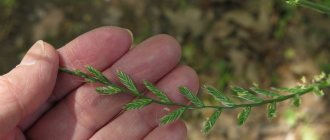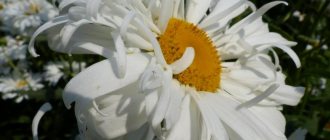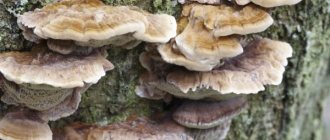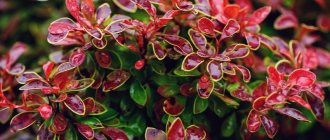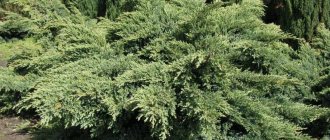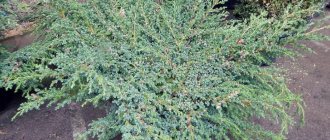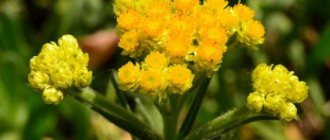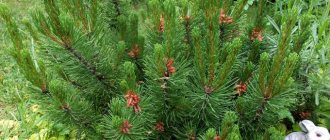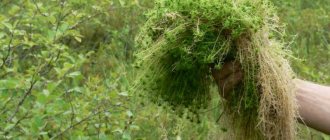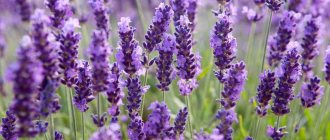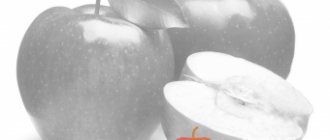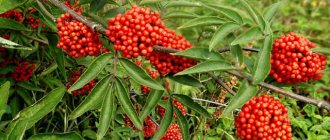Perennial ryegrass: description
This plant with a powerful root system has a height of up to seventy centimeters (usually from fifteen centimeters to half a meter). Perennial ryegrass has both vegetative and generative shoots, which makes it different from other types of chaff, which are characterized by only generative shoots.
The stems of the plant are smooth, the leaves are bright green, long and thin, up to thirty centimeters in size, shiny below, rough along the veins. At the base of the plate there are short, sometimes indistinct ears. Tongue with solid edge, short.
The inflorescence looks like a slightly drooping straight loose spike of brownish-green color. The spikelets, which have from five to twelve flowers, are attached to the spike shaft individually with their narrow side. Each of them has one glume. The lower lemma is awnless. The spikelet is longer than the adjacent flower stem.
Perennial ryegrass seeds are 5.5-6.5 millimeters long and 1-1.5 millimeters wide, lanceolate, grayish in color, slightly concave on the inside. The rod is flattened, expanding upward.
Using ryegrass as a lawn
The ryegrass lawn grass variety is highly resistant to trampling and grows quickly . Thanks to this, it has become popular in the design of sports fields, as well as personal gardens. Already 1.5 months after planting, a dense green cover is formed on the lawn. The type of grass in question will also help solve problems with soil shedding in hilly areas.
Did you know? In 1830, master
Edwin Beard, who worked at a British textile factory, received a patent and permission to mass produce the first lawn mowers, designed by him with his own hands. A modified machine for trimming the edges of fabric rolls was taken as a prototype for the production of equipment.
Use in lawn mixtures
The plant of this type is actively used in lawn mixtures of various grasses. In terms of the total mass, it should not be more than 25%. Typically, ryegrass is used in combination with bluegrass and fescue.
The chaff sprouts in literally a week and prevents the growth of weeds, which has a beneficial effect on the development of plants that are part of the lawn mixture. But this will only be relevant if consumption standards are observed. If you neglect the proportions of adding ryegrass seeds, then the lawn will have bald spots, because a large number of cereals will suppress the growth of other representatives of the flora.
Did you know? The most expensive turf in the world covers the tennis court at Wimbledon in England. And its basis is perennial ryegrass.
Advantages and disadvantages
You need to approach the design of your lawn carefully, so you should first become familiar with the advantages and disadvantages of the plant. This will allow you to understand how best to organize care and avoid mistakes during cultivation.
- The main advantages of ryegrass:
- resistance to trampling;
- fast growth;
- soil strengthening;
- can play the role of a green manure plant - such specimens enrich the soil with useful micro- and macroelements, help improve its structure, reduce the frequency of erosion and shedding, especially on slopes; Usually such grasses are purposefully sown to improve the land before planting vegetable and fruit crops or when the soil is very depleted;
- after mowing, retains the ability to quickly recover and grow;
- long service life of the lawn;
- high resistance to drought and shading.
- There are not many cons; all of them are associated with the botanical characteristics of the culture. The disadvantages include:
- poor tolerance to high humidity;
- low frost resistance;
- high demands on the level of soil acidity and its nutritional value.
Acquisition and sale
The cost of perennial ryegrass seeds is attractive due to its availability and low price, so the demand for this crop is quite high. The price for 1 kg of perennial ryegrass ranges from 100 rubles for forage varieties to 500 rubles, depending on the variety and its purpose. Much also depends on the exchange rate - with a fixed price in foreign currency, fluctuations in the ruble reduce or increase the cost of seeds of lawn varieties of ryegrass. GAZONOV.COM specialists constantly analyze the lawn grass market for the emergence of new varieties of perennial ryegrass to expand sales of this crop in Russia. For example, in European countries, perennial ryegrass is the number 1 crop in breeding, seed production and sales. Buying and selling perennial ryegrass is possible both at retail, from one factory-packed bag, and wholesale.
Selecting a location and sowing rules
You can choose any terrain for sowing ryegrass seeds ; the main thing is that it is not flooded by natural precipitation in the spring and autumn. The main condition for good growth is high-quality pre-sowing soil preparation. It is best to carry out planting work in early spring, when the danger of return frosts has passed. This will allow you to enjoy a beautiful lawn in the summer. But if necessary, sowing can be carried out throughout the warm season, until the beginning of October.
Soil preparation should begin approximately six months before planting . At the first stage, the site is cleared of plant debris and weeds. Then they plow the ground to a depth of 40 cm and begin disinfection. For this, herbicides are used - such preparations help prevent future germination of weeds on the lawn. The drug “Tornado” has proven itself well: it is diluted in a proportion of 75 ml per 3 liters of water and this amount is enough to treat 100 m² of area. The solution is sprayed over the site.
3 weeks after treatment with herbicides, you can begin to enrich the soil with nutrients. For ryegrass to develop well, the soil must be loose. To ensure this condition, 10 kg of peat and sand are added for every 1 m² of area. In parallel with these elements, manure is laid: 10 kg of cow feces or 3 kg of bird feces are taken per 1 m². Immediately after adding nutrients to the soil, it is plowed again to a depth of 40 cm.
Step-by-step process for sowing ryegrass:
- 3 days before the manipulation - add 40 nitroammophoska for every 1 m². Spread the fertilizer evenly over the soil surface, then water. If the soil is moist enough, the fertilizer should be embedded into it to a depth of 5 cm.
- Divide the area into small squares of arbitrary size - this will allow you to evenly distribute the planting material. To accomplish the task, it is best to place stakes at equal distances along and across the entire perimeter of the site, and stretch threads or wire between them, thus creating square zones.
- The seed consumption rate per 1 ha is 10 kg. Based on this parameter, the entire mass of planting material should be divided evenly for each zone.
- Scatter the seeds crosswise in each square.
- Rake over the crops, following the direction of planting (crosswise). This will allow the seeds to be buried to the required level.
Lawn care
Creating a lawn will not give you any hassle. Further care of the plantings is also very simple, but has some nuances and features. In addition to the following, you will need to pay attention to protecting the vegetation from diseases.
The main activities that need to be carried out throughout the season:
- watering;
- fertilizing;
- a haircut.
Important! If there is sufficient rainfall in the ryegrass growing area and the soil in the area is constantly moist, then watering should be abandoned altogether.
Watering
The first month after sowing, you need to water the lawn daily, in the morning or evening. The liquid consumption rate per 1 m² of area is 10 liters. Subsequently, in the summer, the above watering time frames are maintained. In autumn and spring, manipulations are performed every 3 days.
Feeding and fertilizer
In order for the grass to grow quickly and please the eye with its decorative effect, you need to pay special attention to fertilizing.
You will be interested to know how to care for a rolled lawn.
Fertilizer application schedule:
- In the spring, immediately after the snow melts - “Bona Forte” once every 10–15 days for 2 months. The drug is diluted at the rate of 80 ml per 12 liters of water. This amount will be enough to water 6 m².
- In the summer at the end of June - add nitroammophoska once in an amount of 40 g per 10 liters of water. This will be enough for 1 m² of planting. Then, in mid-July and late August, fertilize with potassium salt at the rate of 20 g per 1 m². If the summer is rainy, then the amount of fertilizer is increased to 40 g, since potassium is quickly washed out of the soil.
- In autumn, 10 days before the first frost - double superphosphate in the amount of 70 g/m². It is diluted in water or scattered in its original form around the site.
A haircut
The first mowing of the lawn should be carried out when the grass reaches a height of 8 cm. Manipulation should be carried out in dry weather, using a sharply sharpened scythe. The stubble is left at a height of 3–6 cm. In the future, the procedure is carried out regularly, maintaining the specified height throughout the season. On average, the frequency of manipulation is once every 2 weeks. The last mowing can be done in early November.
Winter hardiness
Lawn grass ryegrass has low winter hardiness and does not tolerate heavy snow. The maximum temperature at which botanical and decorative characteristics are preserved is -18°C. During prolonged cold weather and heavy snowfalls, it may completely leave the grass stand, or bare areas may form on the lawn.
Important! Ryegrass is suitable for creating lawns only in regions with temperate and southern climates.
Diseases and pests
Pest damage is not observed when growing ryegrass.
The following diseases may occur:
| Problem | Solutions |
| Fusarium | Fertilize with potassium salt at the end of August at the rate of 40 g per 1 m²; in winter, limit access to the lawn. In spring, treat with “Fundazol” (10 g per 10 liters of water per 1 m²). |
| Dollar spot | Spray with Benomyl according to the instructions. Remove dead wood regularly and water promptly. |
| Anthracnose | Remove damaged plants by combing out the grass. Treat with Sistan, and 20 days later with Camelot. Dilute medications according to instructions. |
Ryegrass can be used to fill the lawn as an independent plant or in a grass mixture. It has good disease and pest resistance, a fast growth rate and soft foliage that you can happily walk on barefoot. The main thing when cultivating it is to take into account the botanical features and carry out all agrotechnical measures in a timely manner.
